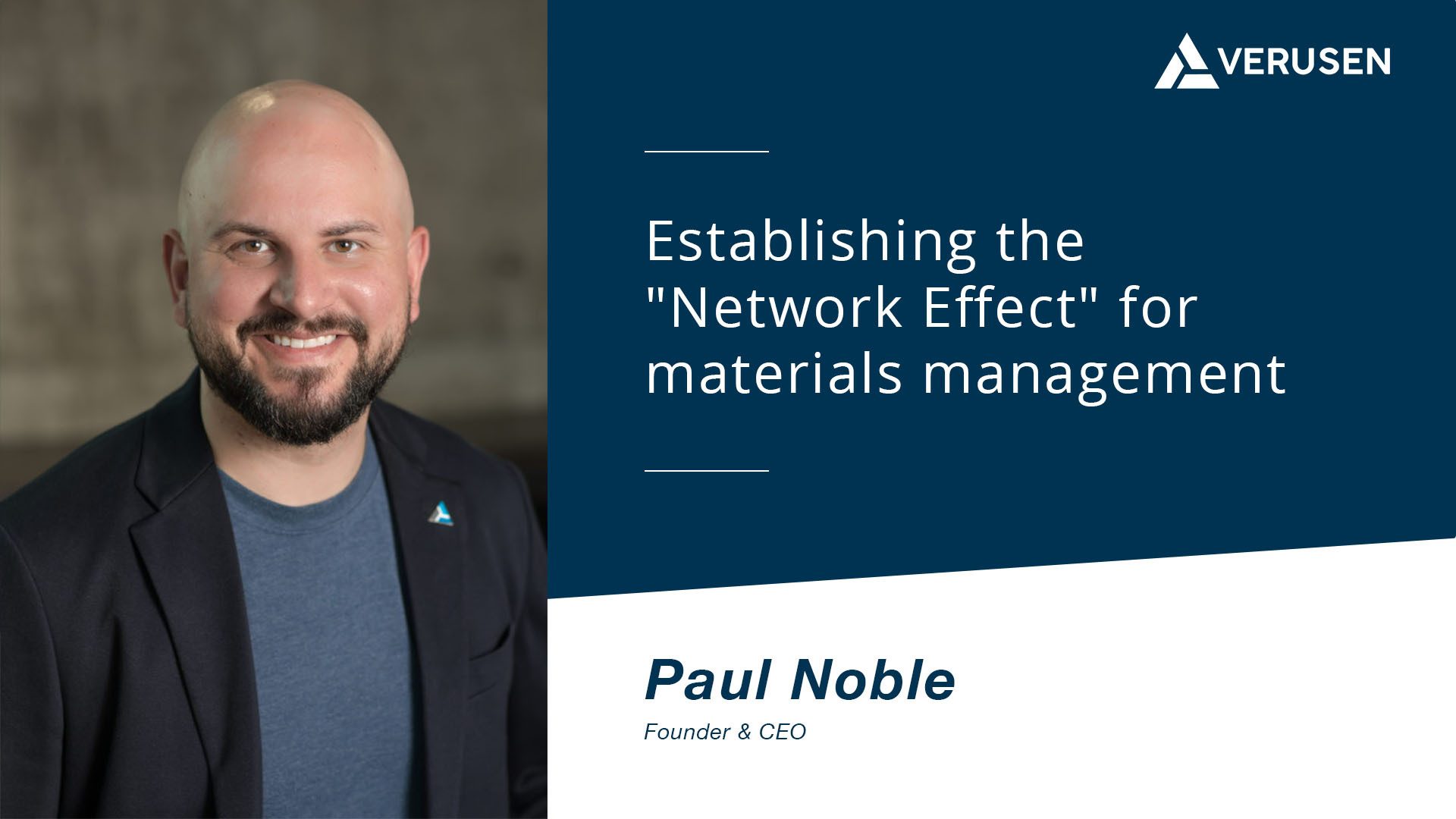Establishing the “network effect” for materials management


The terms “network” and “network effect” get tossed around a lot these days when discussing strategies to improve manufacturing operations and supplier relationships. But “network” and “effect” are used in a variety of ways and incorporate very different initiatives depending on the speaker and the context. So to determine how this can be applied to your organization, it’s important to first define what a supply network is for global manufacturers and review network effects examples so that you can best identify how to optimize it.
As a manufacturer, chances are that your enterprise is not defined by a single network, but several. As you have separate business units responsible for the production of various products, the plants and facilities aligned with that business unit can be defined as a network. However, if you’re one of several organizations who have continuously grown through merger and acquisition over the years, chances are that you’ve never really had the opportunity to organize and optimize each sister facility into a defined network. Having multiple instances of systems of record or ERPs only compounds this further.
And when it comes to managing the materials needed for production, both direct and indirect, chances are you’re overspending on many of the critical parts required to keep your lines running smoothly, while simultaneously overlooking shortages of other parts. As a result, you have loads of wasted capital lying around in various storerooms across your organization, all while placing yourself at higher risk should a crucial part be unavailable or unidentifiable.
Traditional methods don’t cut it anymore
But what if there was a simple and fast way to harmonize your materials data, associate it into pre configured networks, and easily determine where materials can be shared across your facilities in order to better aggregate materials spend and simplify procurement efforts. And what if you could do it all without the traditional data governance and data management prerequisites many projects like this need before they can even get started? For many operations and procurement directors, this sounds too good to be true. That is no longer the case.
Advancements in artificial intelligence and machine learning have taken these technological capabilities out of the buzzword category and have made them applicable in ways many organizations have yet to leverage. Modern SaaS providers like Verusen are harnessing these capabilities to offer purpose-built solutions that remove traditional barriers around data cleansing, disparate systems, overleveraged IT teams, and customization so that global manufacturers can realize real value in a matter of months, not years.
Building a Trusted Network for Material Truth
Material Truth is categorized as an organization’s ability to always have the right part, in the right place, at the right time. And while many will claim they are there today, the reality is that there is simply too much data flowing through the numerous enterprise systems for them to keep up with all part locations, inventory amounts, naming conventions, supplier lead times, purchase order history, price changes, and more this data contains. Even when companies have dedicated team members tasked with overcoming this challenge, they typically only have the capacity to analyze dozens of SKUs at a time, despite the several thousand the organization has on hand. There simply isn’t enough time or energy to manually evaluate all that data.
Now organizations have the option to adopt technology that not only allows them to harmonize data at an individual plant level, they can apply this capability to the numerous virtual networks within the enterprise to optimize the entire organization’s materials inventory. Regardless of system of record, number of instances, or whether they operate under a centralized or decentralized materials management strategy, this ability now exists in a single, easy to use cloud platform.
The opportunity to finally bridge the gap between operations and procurement regarding material spend is now available. With Verusen’s Trusted Network capability, organizations not only achieve Material Truth, they move even closer to an autonomous procurement initiative many organizations hope to achieve by 2030. Once you trust the data around required materials across your internal network(s), collaboration with your suppliers to extend beyond your four walls and out across your resilient supply network becomes easier than ever. This continues to lower working capital and material spend while significantly reducing risk.
It’s time to put data cleanses and traditional approaches to rest and begin harnessing the sustainability and scalability that AI and ML can add to drive your materials management maturity. It’s time to build your Trusted Network.
Learn more about developing a Trusted Network for Material Truth here.
Paul Noble
CEO & Founder of Verusen
